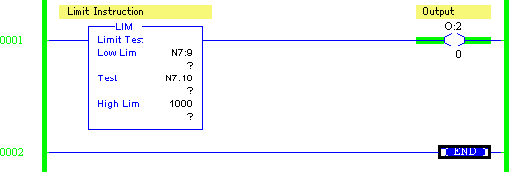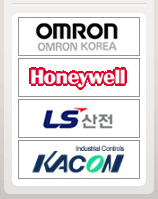 LIM은 Limit Test 의 약어 이다.
LIM은 Limit Test 의 약어 이다.
Tes(N7.10) 데이터 범위가 Low Lim, High Lim, 범위안에 있을때 출력 O:2/0 이 ON 된다
즉 다시 말하면
Low Lim[ N7:9 ] <= Test[N7.10] <= High Lim[ 1000 ]
위 조건이 성립되면 Output [ O:2/0 ]이 ON되는 조건이다.
[-원본글-]
The LIM instruction is used to test for values within or outside a specified range, depending on
how you set the limits.
The symbol for the limit command is illustrated above. The LIM command is placed on the left
side of the rung to determine if a rung will be true or false for an output command. There are two
parameters to enter, the Low Limit and the High Limit. The values can be word addresses or
constants, restricted to the following combination:
⊙-If the Test parameters is a program constant, both the Low Limit and High Limit parameters
must be word addresses.
⊙-If the Test parameters is a word address, the Low Limit and High Limit parameters can be
either a program constant or a word address.
If the Low Limit has a value to or less than the High Limit, the instruction is true when the Test
value is between the limits or is equal to either limit. If the Test value is outside the limits, the
instruction is false, as shown below.
Low Limit is less than High Limit
Low Limit | Limit High Limit | Instruction is True | Instruction is False
2 6 2 through 6 -32,768 through 1 and 5 through 32,767
If the Low Limit has a value greater than the High Limit, the instruction is false when the Test
value is between the limits. If the Test value is equal to either limit or outside the limits, the
instruction is true, as shown below.
Low Limit greater than High Limit
Low Limit | High Limit | Instruction is True | Instruction is False
6 2 -32,768 through 2 and 6 through 32,767 3 and 5
|

